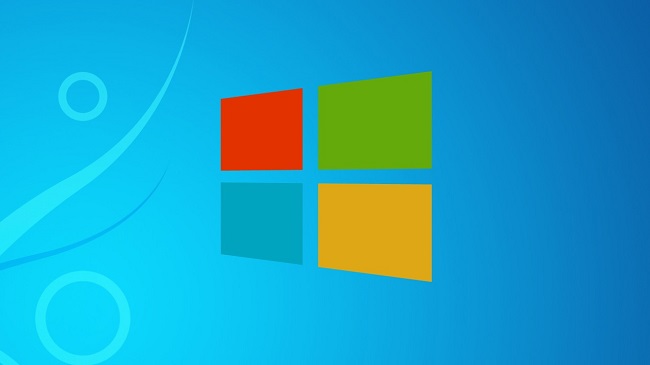On several occasions you might hear your computer’s fan spin up and feel it getting all oven-like searing for no discernible reason.
On that very instance head to Task Manager (alt+ctrl+delete) and you might catch sight of “Windows Modules Installer Worker” eating up on a lot of that precious CPU and disk resources. The process, also referred to as TiWorker.exe, is a part of the Windows Operating System.
What Is Windows Modules Installer Worker?
As the name suggests, this system process “enables installation, modification and removal of Windows updates and optional components” as a part of its service.
With Windows 10, the Operating System updates are automatically installed via Windows Update, so this process is most probably just installing updates in the background.

Having said that, if you choose to uninstall an update or just add or remove an optional Windows feature, the Windows Modules Installer Worker will also have to play its part in the job.
Though the process is termed as Windows Modules Installer Worker on the normal Processes tab in Windows 10’s task manager, its file name is TiWorker.exe, and you can see that in the Details tab.
Microsoft releases updates on second Tuesday of every month on what it likes to call as the “Patch Tuesday”.
Apart from “Patch Tuesday”, the updates are released by the company as and when sought required and necessary. If a lot of CPU is being used by this, it is plausible that your computer has been downloading new updates from Microsoft.
You may or may not have to restart your computer in order to complete the installation process as Windows generally does quite a lot of the updating tasks in the background. So your work does not have to suffer to the updates and installing time and you can continue using your PC.
Why Is It Using So Much CPU?
Here’s the unfortunate: as far as should be obvious, periodically high CPU utilization from the Windows Module Installer Worker seems to be its nature.
Fortunately, if you permit it to do its designated task, the process in its due course will come to an end and stop using the CPU and disk resources.
As soon as it is over with its work, it will vanish from the running process in the Task Manager on your PC.
The time taken by it will depend on factors such as the speed of your computer’s CPU and storage, along with the number and size of updates it was intended to install.
Can I Disable It?
You will come across some terrible online guidance on disabling the Windows Modules Installer system service to disrupt this from happening.
This will only hamper with your system’s ability of installing the updates effectively and efficiently and therefore it is unadvisable.
Likewise, some may even prescribe to setting your network connection to “metered”, which will keep your system from consequently downloading and installing a number of essential updates.
This step prevents Windows Modules Installer process from initiating; thus, your computer wouldn’t be able to install critical security updates that can potentially protect you from malware like the WannaCry ransomware, which exploited a bug patched two months before it was released.
Giving Operating System updates a miss can be hazardous for your system and therefore it isn’t recommended.
Without a doubt, you can install updates manually, but the twist being that Windows Modules Installer Worker process will run eventually after a manual update as well!
So, all things considered, it is most likely the best option to allow the TiWorker.exe process to do what it is made for time and again without trying to cause disruptions.
This is how the Windows OS is designed to install updates and you shouldn’t try to derange the process which is ultimately for your own good.
Is It A Virus?
This process is an essential part of the Windows OS itself. Up until now there haven’t been any reports of a malware impersonating itself as the Windows Modules Installer Worker, or TiWorker.exe process.
Nonetheless, if you are worried about malwares, it is in the best interest to run a malware scan with your preferred antivirus software to check out if something’s fishy.
If You Think Something’s Wrong?
If you’re still convinced that something is dodgy- perhaps the Windows Modules Installer Worker process has been working for quite some time, or maybe if you think it just keeps running more frequently than expected, there are a couple of troubleshooting steps you can follow.
These steps won’t do you any good if the process is just normally running, although it can potentially fix problems with Windows Update and the Windows Operating System itself that could come in way of the normal functioning of the Windows Modules Installer Worker service.
The Windows Update trouble-shooter can find and fix problems that could cause unwanted issues to occur. To run it on Windows 10, follow the steps below.
Step1: Head to Settings.
Step2: Open Update & Security.
Step3: Click on Windows Update.
Step4: Run the trouble-shooter.
After running the trouble-shooter successfully, apply any suggested fixes and you are ready to go.
However even if the trouble-shooter doesn’t seem to help, you may want to give the SFC or DISM tools a shot to scan your system for corrupted or missing files.
At last if all these measures go in vain, you can always resort to resetting your PC to its default factory state and starting over afresh with the OS.
Conclusion
Therefore, it can easily be concluded that what was perceived as a glitch in their system by most of the people is just actually an essential service for the Windows Operating System by Microsoft.
It is the process which helps to install, modify and remove programs in the Windows system and thus should not be fiddled around with if you want your system to the desired output with its maximum performance.
Though it definitely eats up a lot of space on your CPU and disk but it is because of it being an essential and heavy process and you should not mess up with it because once completed it will only benefit you.
As advised at many places wrongly, you should not disable it as it will prevent Windows from installing updates properly.
Also, if you try to switch to manual updates, you will inevitably have to run the Window Modules Installer Worker later so it is recommended to let the system run the due course of action for the updates itself.
Also, the process isn’t a virus as suspected but you should always run a malware check with your antivirus software for utmost safety.
If you’re still convinced about something being wrong, you should definitely follow the trouble-shoot steps to solve the matter and last but not the least if all other measures seem to fail and give no suitable result try using the SFC or DSIM tool or the ultimate resort of resetting your computer to its default factory state and start over with a fresh operating system that is as good as brand new and hopefully you won’t have to face anymore problems.




















